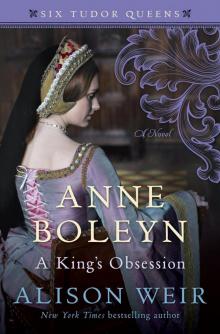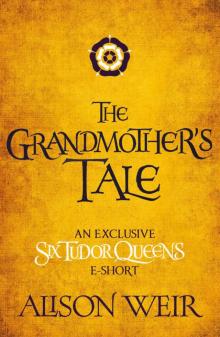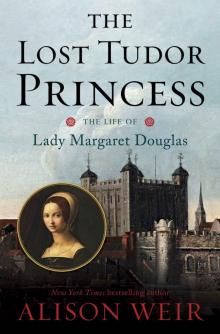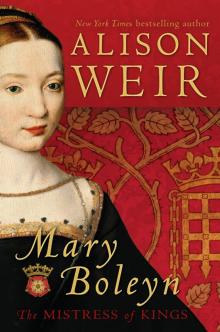- Home
- Alison Weir
Mary, Queen of Scots, and the Murder of Lord Darnley Page 32
Mary, Queen of Scots, and the Murder of Lord Darnley Read online
Page 32
Partly at de Alava’s wish, Beaton asked the Queen Mother “if she had heard any discourse or advertisement lately tending to your hurt or disadvantage, but I came no speed [I had no success], nor would she confess that she had got nor heard any such appearance.” She said that her ambassadors to Scotland had told her that Mary’s affairs “were at very good point”; furthermore, she had heard from Mary’s own half-brother, Lord Robert Stewart, that Mary had forgiven Morton, Ruthven and Lindsay, “so she thought there was nothing to be feared.” Indeed, she had been glad to hear of the good relations between Mary and her subjects, “and saw nothing that might stop it, except if it were the variance between you and the King, which she desired God to appease.” Finally, Beaton humbly beseeched Mary “to cause the Captains of her Guard [to] be diligent in their office, for, notwithstanding that I have no particular occasion whereon I desire it, yet can I not be out of fear until I hear of your news. I pray the eternal God to preserve Your Majesty from all dangers, with long life and good health.”37The letter was encoded in cipher and entrusted to a Scottish archer, Robert Drury.
What had de Alava heard to make him so anxious for Mary’s safety? He probably knew something of Darnley’s plotting, but, as he sent Mary a warning, nearly three weeks after Darnley’s death, that there was “yet some notable enterprise planned against her,” and claimed that he had learned this from the same source, it seems more likely that he had obtained intelligence of the Lords’ conspiracy against Darnley and drawn his own conclusions. What seems clear is that King Philip was not involved in any plot against Mary, for he would hardly have sanctioned de Alava’s warning if he had intended her any harm. It has been suggested that he was behind Darnley’s plot and deliberately sanctioned a warning that would come too late, but at this stage Mary’s future movements could not have been predicted, so clearly Darnley’s plans did not have the backing of Spain. Yet it seems that de Alava had not revealed all that he knew to Beaton, and it may be that he would have compromised his contacts by giving away too much of what he had heard. Beaton seems to have suspected Catherine de’ Medici of knowing more about the “surprise” than she had let on, and indeed she may well have done so, having rifled through de Alava’s letters. The fact that de Alava prompted Beaton to question Catherine suggests that he feared what she had discovered, which may account for his “choler” towards her.
Tragically, Beaton’s warning was to arrive too late, both for Mary and for Darnley.
15
“ALL WAS PREPARED FOR THE CRIME”
MARY AND DARNLEY LEFT GLASGOW for Edinburgh on Monday, 27 January 1567. Since Darnley, “as yet not whole of his disease,”1 was travelling in a litter,2progress was slow, and they stopped for the night at Kilsyth, twelve miles from Glasgow.3The Book of Articles claims that, “as they were riding forth the way by Kilsyth, she passed afore, desiring him to follow her after in the litter. But he, even then suspecting his life, said he would return to Glasgow if she tarried not with him. And she, not willing to spoil the purpose that was so far brought to pass, returned to him [and] gave him meat forth from her own hands.” There is no contemporary evidence to corroborate this tale.
The King and Queen arrived at Callendar on the 28th.4Curiously and, some thought, ominously, “a raven continually accompanied them” all the way from Glasgow to Edinburgh.5Mary and Darnley spent one or two nights at Linlithgow Palace on 29, 30 or 31 January, before setting out on the final sixteen miles of their journey to Craigmillar.6
The Book of Articles alleges that, while they were at Linlithgow, Bothwell’s man, Robert “Hob” Ormiston, came to inform the Queen that Bothwell “was returned to Edinburgh and had prepared all things,” but this is a fabrication because Kirk o’Field had not yet been decided upon as a lodging for Darnley, and no preparations for the murder were made before then, as Ormiston later testified under interrogation. Moray’s Journal claims that Mary waited at Linlithgow until Ormiston brought her news that Bothwell was on his way to Edinburgh.7Mary and Bothwell did arrive back in Edinburgh around the same date, but this may have been by coincidence rather than collusion.
On 27 January, Bothwell had ridden out from Jedburgh into Liddesdale, where, to his “great peril,” he countered an attack by the vengeful Elliott clan and arrested twelve troublemakers.8The next day, he was either at Hermitage or Jedburgh, and on the 29th was on his way back to Edinburgh, which he reached probably on 30 January. Here, he installed himself in his lodgings in Holyrood Palace, which comprised chambers on two floors, connected by a turnpike stair and overlooking the garden.9Lord Ruthven had formerly occupied these rooms.10
Mary and Darnley approached the outskirts of Edinburgh either that day, 30 January, or on one of the next two days.11Bothwell came to meet them and escort them to Craigmillar. But at the last minute, either through fear that he might be imprisoned or murdered behind the castle’s stout walls, or because Craigmillar was inconvenient to his own plans, Darnley declared he did not wish to complete his convalescence there,12and it was decided that he should go instead to the Old Provost’s Lodging at Kirk o’Field, “a country house near the city”13and “a place of good air where he might best recover his health.”14The hasty preparations made for Darnley’s reception confirm that this was a last-minute change of plan.15
The question of who chose Kirk o’Field is crucial. Darnley’s servant, Thomas Nelson, who survived the explosion, later recalled, “It was devised in Glasgow that the King should have lain at Craigmillar, but, because he had no will thereof, the purpose was altered, and conclusion taken that he should lie beside the Kirk o’Field.” Nelson expected Darnley to be lodged in the Duke of Chatelherault’s mansion at Kirk o’Field, and evidently Darnley did too, “but the contrary was shown him by the Queen, who conveyed him to the other house,”16the Old Provost’s Lodging, which Darnley “in no wise liked of.”17This suggests that it was Mary who chose Kirk o’Field, or at least the Old Provost’s Lodging. Nelson’s account has been questioned on the grounds that it is unlikely that Darnley would have wanted to stay in the house of his family’s greatest enemy, but it might have given him a sense of smug satisfaction to think that he could appropriate his adversary’s fine mansion: he was the King, and would expect to be lodged in the best house available.
Lennox claims that, when Darnley complained that he “misliked the other [house] that she prepared for him,” Mary “took him by the hand and said that, although that house was fairer in his sight, yet the rooms of the other were more easy and handsome for him, and also for her, that there passed a privy way between the palace and it, where she might always resort unto him till he was whole of his disease”; at which Darnley, “being bent to follow her will in all things, yielded to the same, and so entered the house.”18 The “privy way” that Mary referred to was a back route through the grounds of the nearby Blackfriars monastery, which gave access to a lane leading to Kirk o’Field.19
“In choosing this lodging,” wrote Buchanan, Mary “wished it to appear that her reason was the salubrity of it.” He made it appear, however, that she had a more underhand purpose. But there is evidence that Kirk o’Field was not the Queen’s choice.
Nau, who may well have got his information from Mary, states that Darnley himself chose Kirk o’Field “on the report of Sir James Balfour,” whose brother owned the Old Provost’s Lodging, “and some others. This was against the Queen’s wishes, who was anxious to take him to Craigmillar, for he could not stay in Holyrood Palace lest he should give the infection to the Prince. On his own account, too, he did not wish anyone to see him in his present condition, nor until he had gone through a course of baths in private.” If Balfour was Darnley’s accomplice in his treasonous schemes, then—it has been argued—his purpose in suggesting Kirk o’Field may indeed have been a sinister one. It has been seen as significant that Kirk o’Field was chosen after Moretta’s arrival; Balfour may have been working in tandem with Moretta, and it is also possible that the treacherous Balfour was conspiring with b
oth Darnley and the Protestant Lords. The fact that Balfour advised the King to go to Kirk o’Field perhaps suggests that he was the driving force behind Darnley’s plotting.
In his confession, John Hepburn also claims that Balfour suggested Kirk o’Field.20Bothwell states that Darnley’s sojourn there “was by common consent of the Queen and her Council, who were anxious to preserve the health of all concerned.” This implies that Mary and her Lords consented to a suggestion made by somebody else, probably Balfour. We know that Mary would have preferred Darnley to lodge at Craigmillar, which was not only in a healthy location but was also a fortress where he would be safe from his enemies, and isolated from anyone who was conspiring with him.
Leslie says that Kirk o’Field was decided upon “by the advice of the doctors, as being the most healthy spot in the whole town.” This does not preclude Balfour’s suggesting it. Having agreed to the King lodging at Kirk o’Field, Mary herself selected the Old Provost’s Lodging as the most suitable residence. It had, after all, been used recently by Bedford when he visited Edinburgh for the Prince’s baptism. Moreover, it was lying empty, while the Duke’s house was at present occupied by Archbishop Hamilton,21Chatelherault himself being still in exile in France.
Paris, in his deposition, alleges that it was Maitland who suggested Kirk o’Field. Paris is less likely to be accurate than Nau, but it is not implausible that Mary chose the Old Provost’s Lodging on Maitland’s advice, perhaps little suspecting that Maitland may have had an ulterior motive in choosing it. Maitland, after all, had been one of the two prime movers in the plot to get rid of Darnley. The house was in a quiet location and could be approached by a back route, and its security would be easy to breach.
Soon after Darnley’s murder, Robert Melville went to England and there told de Silva, with regard to Kirk o’Field, that, because of its healthy position, “the King had chosen it.”22Moretta was to say the same thing to Giovanni Correr, the Venetian ambassador.23These reports corroborate Nau and other evidence, and we may therefore safely conclude that it was indeed Darnley who decided that he should stay at Kirk o’Field. We may also conclude that he did not select the Old Provost’s Lodging.
Buchanan states that “the place had been made ready for [Darnley’s] murder by Bothwell, who, in the Queen’s absence, had undertaken that task,” but the house at Kirk o’Field was prepared in a hurry after the last-minute decision had been made to change the King’s lodgings, so Bothwell could not have had a chance to make ready for the murder. On 20 May following, Servais de Condé, the Queen’s steward, stated that the furniture for Darnley was delivered to the house in February.24As the King arrived on 1 February at the latest, there must have been a frantic flurry of activity to get the place ready for him.
At Darnley’s coming, “the chamber was hung and a new bed of black figured velvet standing therein,”25which had been prepared for Bedford. But this was not good enough for a king, so tapestries, hangings, carpets, furnishings and supplies were quickly carted up from Holyrood.26
Kirk o’Field lay to the south of Edinburgh, on a hill overlooking the Cowgate; it stood just inside the city wall and three-quarters of a mile from Holyrood Palace, in a semi-rural location, “environed with pleasant gardens, and removed from the noise of the people.”27The mediaeval conventual church of St. Mary in the Fields had been refounded as a collegiate church in 1510, and stood on a high eminence. East of it, on a rising slope that dropped steeply to the north, there had been erected a range of collegiate buildings around a quadrangle. The church itself had been damaged by the English in 1544 and again by the reformers in 1558, and was now an abandoned ruin.28
The main frontage and gate to the collegiate buildings were to the west; in the centre of this range was the New Provost’s Lodging, built around 1511–12, which was the residence of Robert Balfour. To the north of this was the Precentor’s House, to the south an enclosing wall, and behind it, at right angles to, and lower than, the New Provost’s Lodging, was a long hall known as the “Salle” or the Prebendaries’ Chamber, which had been built after 1511 and was linked to the Old Provost’s Lodging, which stood further down the slope. The latter must have been built before 1510 and parts of it may have dated from the thirteenth century, when the church was originally built by the Austin Friars. Behind the Old Provost’s Lodging was a little courtyard and the 21-foot high Flodden Wall, in which there was a postern gate “hard by the house”29giving on to a lane called Thieves’ Row; beyond lay the walled south garden and orchard, surrounded by open fields known as “the Lands of Bristo,” and to the east of the building there were gardens. On the north and east sides of the quadrangle were small, gabled houses that, prior to the Reformation, had accommodated the resident canons, and in the centre was a well. The triple-storeyed Duke’s House, where Darnley had hoped to lodge, stood beyond the quadrangle to the north-west; it had been built by Chatelherault in 1554 on the site of the Friars’ hospital, or guest house.
Buchanan described the Old Provost’s Lodging as “a house not commodious for a sick man, nor comely for a king, for it was both ruined and ruinous, and has stood empty without any dweller in it for divers years before, in a place of small resort between the old falling walls of two kirks, near a few almshouses for poor beggars. And that no commodious means for committing that mischief might be wanting, there is a postern door in the town wall by the house, whereby [the assassins] might easily pass away into the fields.” The Old Provost’s Lodging had certainly not stood empty for years, and was in no way ruinous. In fact, it was a spacious and well-appointed residence, and Mary herself did not disdain to use it. Nor is there any evidence that Darnley was forced to stay there.
The house’s two storeys were connected by a 3-foot-wide turnpike stair in a turret. Darnley’s bedchamber was on the first floor, and measured about 16 feet by 12 feet; it had a timber gallery with a window that projected over the Flodden Wall. The wall had a width of 6 feet at the base but tapered to a foot-wide battlemented top; the ground rose steeply at this point, and the drop beyond the wall was no more than 16 feet. When Mary stayed at the house, she slept in a bedchamber directly below Darnley’s; her room was six steps up from the main entrance on the ground floor, and had a window overlooking the quadrangle. Each bedchamber had a small anteroom or garderobe, measuring about 7 feet by 12 feet. The single-storeyed Prebendaries’ Chamber, or Salle, which measured approximately 45 feet by 15 feet, served as a presence chamber, and was accessed through a passageway and steps from the upper floor. Mary’s courtiers would gather here when she visited Darnley.
The kitchen was in the cellar. The low groin-arched vaults below the Prebendaries’ Chamber, which were about 6 feet high at the east end and only about 2 feet high at the west end, were connected to the loftier cellars beneath the Old Provost’s Lodging, which had a height of between 6 feet and 7 feet. Darnley’s house had three outer doors: one, the Fore Entry, opened on to the quadrangle, one led to the garden, and one, in the kitchen, gave on to the little alleyway that led from the quadrangle under the passage between the Prebendaries’ Chamber and the Old Provost’s Lodging. There may also have been a door nearby giving entry to the vaults of the Prebendaries’ Chamber.
Darnley’s bedchamber was hung with six tapestries that had been confiscated from the Gordon family after the Battle of Corrichie. It was furnished with a small Turkey carpet, a “high chair” upholstered in purple velvet with three red velvet cushions, a little table covered in green velvet and a chamberpot. A bath was placed by the bed, ready for the King’s treatment; when not in use, it was covered by a door that had been removed from the upper entrance to the turnpike stair on the Queen’s orders;30it was later implied that she had done this to facilitate the easy access of Darnley’s murderers. Darnley did not like the black bed that had been provided for Bedford, so his own violet velvet bed, the one that Mary had given him the previous August, which had previously been owned by Marie de Guise, was brought up from Holyrood.31
The Queen�
�s bedchamber had a bed with yellow and green damask hangings. In the Prebendaries’ Chamber, a leather chair of estate covered with watered silk of red and yellow, the royal Scottish heraldic colours, was set on a dais beneath a black velvet cloth of estate fringed with silk, and on the walls hung five more Gordon tapestries. In Darnley’s garderobe, there was a set of seven tapestries entitled “The Hunting of the Coneys”; the royal close stool had two basins, and a canopy and curtains of yellow taffeta.
During his stay at Kirk o’Field, Darnley was attended by his valet, William Taylor, Thomas Nelson and two grooms, Andrew McCaig and Master Glen. All were lodged in the house, as well as one Edward Symonds and “Taylor’s boy,” probably the valet’s body servant.32There was also a cook, Bonkil, who went home when his duties were done. Surprisingly, no mention is made in any source of guards for the King, which seems unusual. Both he and Mary knew that his enemies had been conspiring to take his life, and it is curious that he did not demand guards, nor Mary provide them. The lack of such protection left him dangerously exposed to attack.
After seeing Darnley comfortably installed at Kirk o’Field with his servants, Mary returned to Holyrood. The raven that had accompanied them on their journey from Glasgow remained behind, and was seen on several occasions, perching on the roof of the Old Provost’s Lodging.33
It seemed that good relations had now been restored between the King and Queen. Mary visited her husband daily,34“and used him in every sort as well as he himself could wish.”35She spent two nights at Kirk o’Field, sleeping in the bedroom below his. They sat up late, sometimes until midnight,36talking, playing cards or listening to music, and “many nobles” came with the Queen to divert the convalescent.37According to Buchanan, Mary reconciled Darnley and Bothwell, “whom she wished to be free from suspicion.” There were no rows or recriminations. According to Nau, and perhaps Mary, the royal couple were “perfectly reconciled.”

 Richard III and the Princes in the Tower
Richard III and the Princes in the Tower Britain's Royal Families: The Complete Genealogy
Britain's Royal Families: The Complete Genealogy The Lady in the Tower: The Fall of Anne Boleyn
The Lady in the Tower: The Fall of Anne Boleyn Six Wives of Henry VIII
Six Wives of Henry VIII Elizabeth of York: A Tudor Queen and Her World
Elizabeth of York: A Tudor Queen and Her World Captive Queen
Captive Queen Innocent Traitor
Innocent Traitor The Marriage Game
The Marriage Game A Dangerous Inheritance
A Dangerous Inheritance Katherine of Aragón: The True Queen
Katherine of Aragón: The True Queen The Marriage Game: A Novel of Queen Elizabeth I
The Marriage Game: A Novel of Queen Elizabeth I Princes in the Tower
Princes in the Tower Anne Boleyn: A King's Obsession
Anne Boleyn: A King's Obsession Traitors of the Tower
Traitors of the Tower Mistress of the Monarchy: The Life of Katherine Swynford, Duchess of Lancaster
Mistress of the Monarchy: The Life of Katherine Swynford, Duchess of Lancaster Queens of the Conquest: England’s Medieval Queens
Queens of the Conquest: England’s Medieval Queens Eleanor of Aquitaine: A Life
Eleanor of Aquitaine: A Life Mary, Queen of Scots, and the Murder of Lord Darnley
Mary, Queen of Scots, and the Murder of Lord Darnley Henry VIII: The King and His Court
Henry VIII: The King and His Court Queen Isabella: Treachery, Adultery, and Murder in Medieval England
Queen Isabella: Treachery, Adultery, and Murder in Medieval England Katheryn Howard, the Scandalous Queen
Katheryn Howard, the Scandalous Queen Arthur- Prince of the Roses
Arthur- Prince of the Roses The Wars of the Roses
The Wars of the Roses Eleanor of Aquitaine: By the Wrath of God, Queen of England
Eleanor of Aquitaine: By the Wrath of God, Queen of England Mary Boleyn: The Great and Infamous Whore
Mary Boleyn: The Great and Infamous Whore Jane Seymour: The Haunted Queen
Jane Seymour: The Haunted Queen Anna of Kleve, the Princess in the Portrait
Anna of Kleve, the Princess in the Portrait Lancaster and York: The Wars of the Roses
Lancaster and York: The Wars of the Roses The Grandmother's Tale
The Grandmother's Tale The Princess of Scotland (Six Tudor Queens #5.5)
The Princess of Scotland (Six Tudor Queens #5.5) The Lady Elizabeth
The Lady Elizabeth Katherine Swynford: The Story of John of Gaunt and His Scandalous Duchess
Katherine Swynford: The Story of John of Gaunt and His Scandalous Duchess The Curse of the Hungerfords
The Curse of the Hungerfords The Lost Tudor Princess: The Life of Lady Margaret Douglas
The Lost Tudor Princess: The Life of Lady Margaret Douglas Eleanor of Aquitaine
Eleanor of Aquitaine Mistress of the Monarchy
Mistress of the Monarchy The Lost Tudor Princess
The Lost Tudor Princess Henry VIII
Henry VIII Anne Boleyn, a King's Obsession
Anne Boleyn, a King's Obsession A Dangerous Inheritance: A Novel of Tudor Rivals and the Secret of the Tower
A Dangerous Inheritance: A Novel of Tudor Rivals and the Secret of the Tower Elizabeth of York
Elizabeth of York Katherine of Aragon, the True Queen
Katherine of Aragon, the True Queen Katherine Swynford
Katherine Swynford Wars of the Roses
Wars of the Roses Queens of the Conquest
Queens of the Conquest Mary Boleyn
Mary Boleyn Britain's Royal Families
Britain's Royal Families The Tower Is Full of Ghosts Today
The Tower Is Full of Ghosts Today Life of Elizabeth I
Life of Elizabeth I Anne Boleyn A King's Obssession
Anne Boleyn A King's Obssession Lancaster and York
Lancaster and York Jane Seymour, the Haunted Queen
Jane Seymour, the Haunted Queen Queen Isabella
Queen Isabella The princes in the tower
The princes in the tower